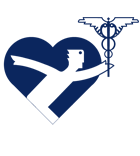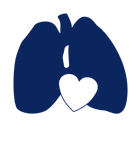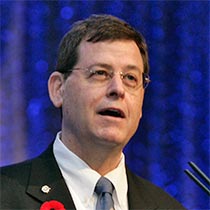Sunday, Oct. 16
7:30 am–8:30 am | Room TBA
AARC Annual Business Meeting


Frank R Salvatore Jr MBA RRT FAARC/Cp-Presiding
Brian K Walsh PhD RRT FAARC/Co-Presiding
This is the official Annual Business Meeting of the AARC 2016 AARC Officers, Board of Directors, and Officers from the House of Delegates are installed. Reports from AARC leadership are presented. The meeting concludes with an address from 2017/2018 AARC President, Brian K. Walsh.
8:00 am–6:00 pm | Room TBA
Sputum Bowl Preliminaries

Renee Wunderley BS RRT-NPS
Teams from the AARC State Societies compete in the preliminary competitions. The top four teams will advance to the Finals on Monday evening, October 17, along with the Student Sputum Bowl finalists.
Sponsored by
8:40 am–9:30 am
4th Annual Thomas L Petty Memorial Lecture

8:40 am–9:30 am | Room TBA | Clinical Practice
Pulmonary Rehabilitation: Where We’ve Succeeded and Where We’ve Failed
Richard Casaburi MD MEngr PhD, Ranch Palos Verdes CA
Pulmonary rehabilitation is of unquestioned benefit to COPD patients. The scientific basis of this therapy is firmly established. Yet it is available to a very small fraction of those who would benefit from it. In the cases of smoking cessation and inhaled bronchodilators, forces have been brought to bear to impact the vast majority of COPD patients. This lecture will examine the reasons for this discrepancy and suggest a way forward.
9:35 am–10:05 am | Room TBA
Neonatal-Pediatrics Section Membership Meeting

Section members meet to determine their needs and priorities, as well as how to use AARC resources to accomplish them. All Congress attendees, including section non-members, are invited to attend and participate.
10:00 am–11:55 am | Room TBA
Open Forum Poster Discussion #3 Monitoring/Equipment
Researchers and clinicians present findings of studies on aerosol therapy, mechanical ventilation, neonatal and pediatric care, education, management, and every other mode of practice in our profession.
Supported by an unrestricted education grant from
10:00 am–11:55 am | Room TBA
Open Forum Poster Discussion #4 Aerosols/Drugs
Researchers and clinicians present findings of studies on aerosol therapy, mechanical ventilation, neonatal and pediatric care, education, management, and every other mode of practice in our profession.
Supported by an unrestricted education grant from
10:00 am–10:25 am | Room TBA
Home Care Section Membership Meeting

Section members meet to determine their needs and priorities, as well as how to use AARC resources to accomplish them. Congress attendees, including section non-members, are invited to attend and to participate.
10:30 am–11:05 am | Room TBA | Clinical Practice
The Post-Acute Care Respiratory Navigator: Clinical Programs

Zach Gantt RRT, Livingston TN
This presentation will discuss the opportunities for the RT as the COPD Navigator and overall chronic disease provider in the post-acute care setting. As RTs there is a tremendous opportunity to expand these evolving hospital roles outside the walls of the hospital and identify gaps in care and reduce blind spots for hospitals, ACO, and PCP in coordinating services.
10:30 am–11:05 am | Room TBA | Clinical Practice
What Do Respiratory Therapists Need to Know About Older Adults? A Gerontologist’s Perspective

Nancy P Kropf PhD, Atlanta GA
With increases in number, respiratory therapists can expect that they will be working with a greater number and more complex older patient population. This lecture will provide an overview of physical and psychosocial issues that impact treatment with older adults. In addition, many frail older adults have informal care providers (e.g., family members) or formal caregivers, and therapists must understand how to work as part of a team with these caregivers.
10:30 am–11:05 am | Room TBA | Clinical Practice
Telemedicine on Transport? Helpful or Hindrance?

Jennifer L Watts BS RRT-NPS C-NPT, Oak Lawn IL
Medicine has journeyed into the digital age. This journey has opened up a door to enable additional "eyes" on transport. Telemedicine availability allows for the ?eyes? of specialists to additionally assess a patient; however, how feasible is frequent use of telemedicine on all transports?
10:30 am–11:05 am | Room TBA | Sleep Medicine
Home Portable Testing vs. In Lab: Are We Still Making the Right Decision?

Meena Khan MD, Ohio
As the trend leans towards home testing versus in lab studies, how do the patients fare? Are we still making the right decision to focus efforts on treatment instead of diagnostics? This lecture will discuss recent data completed comparing both in lab and portable studies and review the efficacy of our evaluation methods.
10:30 am–11:05 am | Room TBA | Management
Using Data and Dashboards To Drive Care in Respiratory Care

John Emberger BS RRT-ACCS FAARC, Newark DE
How well can your department show the quality care that you are performing, demonstrate improvements that you initiated, and understand areas for improvement. Timely data and dashboards can help you analyze your department and help the staff drive quality forward at you institution. This lecture will help you understand how to get data, display data, and drive quality forward at your institution.
10:30 am–12:25 pm
Tell Me Something I Should Know About BPD

10:30 am–11:05 am | Room TBA | Neonatal/Pediatric
The Phenotypes of BPD
Huyan Zhang MD, Philadelphia PA
Although generally viewed as a single clinical entity, bronchopulmonary dysplasia is a compilation of several clinical entities. This presentation will discuss the various presentations for BPD as well as its implications for clinical management.
11:10 am–11:45 am | Room TBA | Neonatal/Pediatric
Challenges in Mechanical Ventilation for Severe BPD
Cheryl Lew MD, Topanga CA
Mechanical ventilation of infants with severe BPD can be challenging. Strategies to assist with stabilization of the ventilation status of these vulnerable infants, while treating the overall syndrome, will be discussed.

11:50 am–12:25 pm | Room TBA | Neonatal/Pediatric
BPD Outcomes in 2016: What To Expect
Huyan Zhang MD, Philadelphia PA
Outcomes for infants with chronic lung disease are gradually improving. This presentation will review the available outcome data for these vulnerable infants. Speculations for the future will be discussed.
10:30 am–12:25 pm
Becoming "One" With the Ventilator

10:30 am–11:05 am | Room TBA | Adult Critical Care
Alleviating Asynchrony in Pressure Ventilation
John Davies MA RRT FAARC, Durham NC
Pressure control ventilation is often touted as a method to improve synchrony compared to volume control. However, loss of control of tidal volume is an area of concern. When limiting VT during pressure control, what are the methods for improving synchrony in the patient with air hunger?

11:10 am–11:45 am | Room TBA | Adult Critical Care
Can Specialized Modes Reduce Asynchrony?
Robert L Chatburn MHHS RRT-NPS FAARC, Cleveland OH
A number of new modes have been introduced over the years to improve patient ventilator synchrony. Prominently, these include PAV and NAVA. How do these techniques improve synchrony and does improving synchrony result in an improved outcome?

11:50 am–12:25 pm | Room TBA | Adult Critical Care
Alleviating Asynchrony in Volume Ventilation
Eduardo Mireles-Cabodevila MD, Cleveland OH
Volume control ventilation remains the standard of care for ARDS. However, volume control ventilation at fixed flows and flow pattern can adversely impact the work of breathing. Tricks of the trade for maximizing synchrony during volume control will be reviewed.
11:10 am–11:45 am | Room TBA | Clinical Practice
Transitioning the Outcomes Based Provider to New Operational Standars & Patient Care Programs

Kim Wiles BS RRT, Ford City PA
What are the steps in re-aligning organizational service standards to enhance patient engagement and expanding RT protocols? This lecture will explain what that process looks like and the operational structure needed to support this transition.
11:10 am–11:45 am | Room TBA | Clinical Practice
Care Coordination and Clinical Redesign: Restructuring Strategies for Success for RTs in the Continuum of Care

Vernon Pertelle MBA RRT FACHE, Oceanside CA
Care coordination by respiratory therapists in acute care hospitals helps to support transitional care of respiratory patients for post-acute services, assuring appropriate planning, timely transition, and appropriate follow up in all environments of care. In performance of the role, the RT must have intimate knowledge of payer considerations and levels of care in order to ensure the most optimal health outcomes and patient satisfaction.
11:10 am–11:45 am | Room TBA | Clinical Practice
If You Can Measure It You Can Change It: Quality Metrics in Medical Transport

Tabatha Dragonberry BSRT RRT-NPS AE-C, Fresno CA
In 2016 Alex Brendel and Tabatha Dragonberry worked with the AARC Transport Section to define and track key quality metrics to prove the value of RTs on transport teams. This talk will review the results of the survey of the section, describe the selected metrics, and review how we plan to get these in place across the country.
11:10 am–11:45 am | Room TBA | Sleep Medicine
The Airway: Size and Shape Matter

Lutana Haan MHS RRT RPSGT, Boise ID
Want to know more about the airway? This discussion will emphasize how the airway has changed over time, as well as how sleep, obesity, and genetics affect optimal performance. This visual presentation will show a whole new view of the airway.
11:10 am–11:45 am | Room TBA | Management
Are We a Dying Profession or Can We Create New Roles for Respiratory Therapists?

Kim Bennion MHS BSRT RRT CHC, Salt Lake City UT
Too often, we hear "seasoned" respiratory therapists make comments such as, "Our profession has no future," "If I had it to do again, I wouldn't choose respiratory care," "Respiratory therapists have no room for growth," and the list goes on and on. The presenter will share how she has grown her respiratory therapy non-traditional roles in care management, telemedicine, palliative and hospice care, and compliance consultants and community benefit partners.
11:30 am–3:30 pm | Room TBA
Open Forum Posters Only #1
Researchers and clinicians present the results of their work in this Posters Only session. Authors are available from 12:00 pm - 1:30 pm for questions and interaction.
Supported by an unrestricted education grant from
11:50 am–12:25 pm | Room TBA | Education
Preparing the RT for the Tobacco Cessation Conversation

Georgianna Sergakis PhD RRT FAARC, Columbus OH
Many RTs did not receive training on conducting the tobacco cessation conversation during their formal education experience. This presentation discusses key components necessary for conducting the tobacco cessation conversation and identifies the impact of a continuing education training program on the ability of RTs to help patients take the next step in tobacco cessation.
11:50 am–12:25 pm | Room TBA | Clinical Practice
Pay for Performance Trends in Payment Models Create Opportunity

Gene Gantt RRT, Livingston TN
Value-based care will be the new normal for the near future and beyond. The role of the RT will need to transform and be demonstrated to be one of great value. The role must be one of innovator, expert, and cost-efficient caregiver. The presentation will explore the trends in payment and the future role the RT must play in the big picture of value-based care.
11:50 am–12:25 pm | Room TBA | Pulmonary Function
PRO/CON: Diagnostics Lightning Round


PRO: Jeffrey M Haynes RRT RPFT FAARC, Nashua NH
CON: Matthew J O'Brien MS RRT RPFT Madison WI
Two seasoned technologists debate controversial topics in pulmonary diagnostics in a lightening round format. Topics include: Do ATS/ERS spirometry guidelines need to be strictly followed? Is Impulse Oscillometry an appropriate substitute for spirometry? Spirometry and DLCO are all you need. Should ABGs be part of a complete PFT?
11:50 am–12:25 pm | Room TBA | Sleep Medicine
Making Sense of CMS Regulations Regarding Home Ventilation

Marilyn W Barclay RRT CPFT RPSGT, Albany OR
Sleep providers, home care providers, and in-hospital providers are faced with a myriad of complex requirements when getting CMS approval for home ventilation (CPAP, Bi-level, and higher complexity). Learn about these requirements and amaze your colleagues with your knowledge.
11:50 am–12:25 pm | Room TBA | Management
Sorting Out and Initiating Care Standards, Guidelines, Protocols, and Pathways

John Emberger BS RRT-ACCS FAARC, Newark DE
This lecture will compare and contrast care standards, guidelines, protocols, and pathways, and help you understand how and when to appropriately initiate each of these in the respiratory care department.
12:30 pm–2:55 pm | Room TBA
Open Forum Poster Discussion #5 Education, Part 1
Researchers and clinicians present findings of studies on aerosol therapy, mechanical ventilation, neonatal and pediatric care, education, management, and every other mode of practice in our profession.
Supported by an unrestricted education grant from
12:30 pm–2:55 pm | Room TBA
Open Forum Poster Discussion #6 Neonatal/Pediatric, Part 1
Researchers and clinicians present findings of studies on aerosol therapy, mechanical ventilation, neonatal and pediatric care, education, management, and every other mode of practice in our profession.
Supported by an unrestricted education grant from
12:30 pm–1:00 pm | Room TBA
Long Term Care Section Membership Meeting

Section members meet to determine their needs and priorities, as well as how to use AARC resources to accomplish them. All Congress attendees, including section non-members, are invited to attend and participate.
12:30 pm–1:00 pm | Room TBA
Diagnostics Section Membership Meeting

Section members meet to determine their needs and priorities, as well as how to use AARC resources to accomplish them. All Congress attendees, including section non-members, are invited to attend and participate.
12:30 pm–1:00 pm | Room TBA
Sleep Section Membership Meeting

Section members meet to determine their needs and priorities, as well as how to use AARC resources to accomplish them. All Congress attendees, including section non-members, are invited to attend and participate.
1:15 pm–1:45 pm | Room TBA
Management Section Membership Meeting

Section members meet to determine their needs and priorities, as well as how to use AARC resources to accomplish them. All Congress attendees, including section non-members, are invited to attend and participate.
1:45 pm–2:25 pm | Room TBA | Education
Dusting Off the Cobwebs: Quality Does Matter

Randy Case MA RRT-NPS, Wichita Falls TX
Although web-based education continues to grow in popularity, it can no longer be classified as a new concept in education. The application of innovative resources and technologies is imperative to enrich the quality of content provided to distance-learning students. This presentation will discuss the utilization of Quality Matters to enhance and improve the overall quality and excellence of online respiratory courses.
1:45 pm–3:40 pm
Long Term Care Spotlight: Management of the Upper Airway: From Aspiration Risk to Tracheostomy Problems

1:45 pm–2:20 pm | Room TBA | Clinical Practice
Evaluation of the SIMEX Intermittent Subglottic Aspiration System in Patients Requiring Chronic Mechanical Ventilation
Jerry Gentile BSRT BSHA MBA EdD(c) RRT, Long Island NY
Tracheostomized patients receiving chronic mechanical ventilation are at risk for ventilator associated events, including pneumonia. Experience with the SIMEX Intermittent Subglottic Aspiration System in this population will be presented.

2:25 pm–3:00 pm | Room TBA | Clinical Practice
uProtecting the Airway, Facilitating Speech and Decannulation: The Role of the Speech Pathologist
Terry Eberly MA CCC-SLP, Denver CO
The physician, respiratory therapist, and speech and language pathologist are important team members in managing patients requiring long term ventilation, particularly when goals are set to minimize risk of aspiration, restore speech, introduce oral feeding with intact swallow, and achieve successful tracheostomy tube decannulation.


3:05 pm–3:40 pm | Room TBA | Clinical Practice
Tracheostomies for Respiratory Therapists: "The Hole Story"
Eric S Yaeger MD, Denver CO
Dorene Siegwarth RRT-ACCS Denver CO
There are many different brands and types of tracheostomy tubes. Most practitioners are only exposed to a few, usually those used in their facilities. This presentation will provide a detailed overview of the different ways tracheostomies are performed and the advantages and disadvantages for using different types of tracheostomy tubes to promote weaning, cuff deflation trials, capping, and decannulation. The presentation will conclude with the options for long-term use in tracheostomy-dependent patients, and the options that can be used in difficult airways such as patients with tracheal prolapse, malacia, stenosis, trauma, and obesity.
1:45 pm–4:20 pm
Diagnostics Spotlight: Pulmonary Evaluation Using Exercise Testing

1:45 pm–2:20 pm | Room TBA | Pulmonary Function
Indications for Cardiopulmonary Exercise Testing (CPET)
Katrina Hynes MHA RRT RPFT, Rochester MN
Review the clinical indications for exercise testing in patients that have specific signs or symptoms associated with exercise.

2:25 pm–3:00 pm | Room TBA | Pulmonary Function
CPET: Quality Assurance
Susan Blonshine RRT RPFT AE-C FAARC, Manson MI
Accurate exercise VO2 results are dependent on multiple components aligning correctly in an exercise system. The presentation will review the components and quality control methods to ensure accuracy. Recent multi-center studies are defining methods to incorporate biologic control data to predict equipment function within and between PF laboratories to decrease the variability of the measurements. The presenter will review the literature in regards to acceptable biologic quality control and expected ranges.

3:05 pm–3:40 pm | Room TBA | Pulmonary Function
CPET: Test Performance
Katrina Hynes MHA RRT RPFT, Rochester MN
A sophisticated review will be provided describing the selection of appropriate equipment and testing protocols to elicit a maximal exercise performance.

3:45 pm–4:20 pm | Room TBA | Pulmonary Function
CPET: Cardiac and Ventilatory Response
Carl Mottram RRT RPFT FAARC, Rochester MN
The cardiac and ventilatory response during exercise are key elements of a cardiopulmonary exercise test. These responses will be reviewed as a component of a comprehensive exercise test assessment. This includes a review of the normal and abnormal breathing strategies used to recruit the required minute ventilation to meet the subject's metabolic needs.
1:45 pm–5:00 pm
AARC's 32nd New Horizons in Respiratory Care Symposium Gases

1:45 pm–2:20 pm | Room TBA | Adult Critical Care
Automated Control of FIO2
Richard Branson MSc RRT FAARC, Cincinnati OH
Systems are under development to allow automated control of FIO2 during mechanical ventilation. This presentation will cover potential benefits for this approach.

2:25 pm–3:00 pm | Room TBA | Clinical Practice
How Should Aerosols be Delivered During Mechanical Ventilation?
Rajiv Dhand MD FCCP FACP FAARC, Knoxville TN
What drugs should be delivered by aerosol to mechanically ventilated patients? What is the optimal delivery system?

3:05 pm–3:40 pm | Room TBA | Clinical Practice
Inhaled Carbon Monoxide: From Toxin To Therapy
Dean R Hess PhD RRT FAARC, Boston MA
Carbon monoxide is commonly recognized as a toxic gas. In recent years experimental evidence supports that low dose inhaled carbon monoxide might have therapeutic benefit.

3:45 pm–4:20 pm | Room TBA | Clinical Practice
What Is the Current Role for Heliox?
Ira M Cheifetz MD FAARC FCCM, Durham NC
Heliox has been available for many years. What is the current evidence supporting its use?

4:25 pm–5:00 pm | Room TBA | Clinical Practice
After 25 Years, What Do We Know About Inhaled Nitric Oxide?
Robert M Kacmarek PhD RRT, Littleton MA
Inhaled nitric oxide has become entrenched in respiratory care practice. But where is the evidence? What is the future?
1:45 pm–3:00 pm
Management Spotlight


1:45 pm–3:00 pm | Room TBA | Management
Opening the Door - Expanding RTs’ Roles in the Delivery of Health Care
Cheryl West MHA, Irving TX
Anne Marie Hummel Woodbridge VA
The AARC Respiratory Therapist Human Resources Study 2014 found that only 2.1% of RTs - or over 3,500 RTs if extrapolated to the general RT working population - work in physician's offices. Since the delivery of health care has changed dramatically, especially with the passage of the Affordable Care Act, you might be missing out on new opportunities. This seminar will bring you up-to-date on important new Federal initiatives that can enhance your role as disease managers in physicians? practices and provide you with tools to market your expertise in this setting. In light of the spotlight on COPD readmissions penalties and improving care coordination among providers, gaining knowledge of how physicians can utilize your skills in their practices becomes all the more important.
1:45 pm–4:20 pm
Neo-Peds Spotlight


1:45 pm–3:00 pm | Room TBA | Neonatal/Pediatric
PRO/CON: Should HFOV Be Abandoned for Pediatric ARDS?
Ira M Cheifetz MD FAARC FCCM, Durham NC
Alexandre T Rotta MD Cleveland OH
Despite the growing evidence against the use of HFOV for adults with ARDS, the situation for the pediatric patient remains uncertain. Data in pediatrics remain non-definitive. This debate between two experts in the field will review both the rationale for the use of high-frequency ventilation as well as the available data. To show their equipoise, the speakers will flip a coin at the start of the presentation to determine who will argue which side of this ongoing debate.


3:05 pm–4:20 pm | Room TBA | Neonatal/Pediatric
PRO/CON: Should HFNC Be Used as the First Line of Support for all Infants with Respiratory Distress?
PRO: Rob DiBlasi BSRT RRT-NPS FAARC, Seattle WA
CON: Keith Hirst MS RRT-NPS Boston MA
The use of high flow nasal cannula to support neonates with respiratory distress is increasing at a rapid rate. Is the use of this technology appropriate in these situations or is it being inappropriately applied? The PRO side of this debate will support the use of HFNC for all forms of neonatal respiratory distress prior to consideration of other modes of respiratory support.
1:45 pm–4:20 pm
VAE and IVAC Updates

1:45 pm–2:20 pm | Room TBA | Adult Critical Care
Ventilator-Associated Events: Background and Definitions
Lorenzo Berra MD, Boston MA
The new CDC definitions for VAE and VAI replacing the traditional VAP have resulted in a significant challenge for hospitals and RT departments. This study will provide the rationale for the development of this scheme and how to apply it to ICU metrics.

2:25 pm–3:00 pm | Room TBA | Adult Critical Care
Tracking VAE’s Difficulties and Conflicting Issues for the RT
Kathleen Deakins MSHA RRT-NPS FAARC , Cleveland OH
Respiratory therapists are often tasked with tracking VAE and IVAC in critically ill patients. What are the clinical events associated with VAEs which complicate the CDC definition. When do VAE events occur and what is their temporal association to procedures and therapy?

3:05 pm–3:40 pm | Room TBA | Adult Critical Care
A New Paradigm for Secretion Clearance: Insufflation/Exsufflation and Cleaning the Tube
Lorenzo Berra MD, Boston MA
The standard of care for airway clearance of the ventilated patient is closed circuit suctioning. New devices for cleaning the tube to remove secretions and biofilm may be improvements to and avoid the complications of negative pressure from traditional airway suctioning. The role of insufflation/exsufflation in ventilated patients will also be explored.

3:45 pm–4:20 pm | Room TBA | Adult Critical Care
A Hypothesis for the Impact of Subglottic Secretion Tubes
Thomas Piraino RRT FCSRT, Beamsville Ontario
Subglottic suctioning tubes are uniformly recommended by practice guidelines for the prevention of early pneumonia in the ventilated patient. The practical implementation however, has been problematic. This talk will evaluate the literature on this topic and propose a new interpretation of the literature.
1:45 pm–3:40 pm
Anyone Can Do Research

1:45 pm–2:20 pm | Room TBA | Clinical Practice
Odds Are You Can Do This! Understanding the Results of Medical Studies
Jody Lester MA RRT, Boise ID
The statistical data reported in medical studies can be complicated and intimidating. This presentation will use statistics from recently published medical studies to practice the interpretation of odds ratios, risk ratios, absolute risk reduction, number needed to treat, survival data, and forest plots.

2:25 pm–3:00 pm | Room TBA | Clinical Practice
Research Soup To Nuts
Jeffrey M Haynes RRT RPFT FAARC, Nashua NH
This presentation will describe how a simple research project can be done in a small hospital using a real-life example. All of the steps in completing the study up to and including publication will be described? from "soup to nuts!"

3:05 pm–3:40 pm | Room TBA | Clinical Practice
Studying a Study • Using a Systematic Approach to Evaluate Medical Research
Jody Lester MA RRT, Boise ID
In today's rapidly changing world of clinical practice, old assumptions quickly fall under the weight of new evidence. Clinicians must be able to select and appraise medical studies. Participants in this session will be introduced to, and practice using, the MAARIE framework - a step by step method for evaluating medical studies.
2:25 pm–3:00 pm | Room TBA | Education
Designing the Optimal and Standardized Critical Care Orientation Model

Abigail Greaves MPH RRT-NPS, Saint Joseph MI
This presentation will provide a comprehensive, optimal, and standardized model for orientation of new employees to the ICU and other critical care units. In addition, the economical, professional, and corporate benefits of effective training/orientation will be explained.
3:05 pm–3:40 pm | Room TBA | Management
The Devil Is In the Details

Cheryl Hoerr MBA RRT CPFT FAARC, Rolla MO
Respiratory managers can feel overwhelmed with the pace of change in today's hectic health care environment. All too often the requirements change, and if you miss an update you might discover your department is out of compliance with prevailing standards and protocols. This presentation will provide managers with a forum for obtaining up-to-the-minute information on a variety of critical regulatory topics.
3:05 pm–5:00 pm
Home Care Spotlight: Sustained Patient Engagement: Illusive but Essential in Successful Chronic Disease Management

3:05 pm–3:40 pm | Room TBA | Clinical Practice
The Role of Patient-Centric Care in Chronic Disease Management
Patrick Dunne MEd RRT FAARC, Fullerton CA
Attendees will be able to describe the concept and attributes of true patient-centric care. The importance of patient-centric care in attaining successful chronic disease outcomes will be discussed, as will the impact of recent CMS regulations requiring discharge planning activities to be based upon patient preferences and needs.

3:45 pm–4:20 pm | Room TBA | Clinical Practice
Why I Now Care About My Self-Care: A Patient Perspective
Bob Castle , Austin TX
Attendees will hear a first-hand account of one patient's journey from being a recipient of prescribed care (with limited input) to using self-education on his medical condition and a proactive voice to become actively involved in his care. The presenter will describe how he became a successful, active participant in his collaborative self-care. Positive physician and RT influences and activities that helped facilitate this transition will be discussed.

4:25 pm–5:00 pm | Room TBA | Clinical Practice
Obstacles on the Road to Patient-Centric Care: Important Considerations
Brian Carlin MD, Sewickley PA
Attendees will be able to list common obstacles that arise when moving from the traditional model of physician-directed care to the newer concept of patient-centric care. Useful strategies to help overcome commonly encountered physician resistance to patient-centric care will be discussed, including the important role of the RT. The RT must continue to refine interpersonal skills in interviewing and engaging the patient to understand operative, medical, and personal needs.
3:10 pm–5:05 pm | Room TBA
Open Forum Poster Discussion #7 Management
Researchers and clinicians present findings of studies on aerosol therapy, mechanical ventilation, neonatal and pediatric care, education, management, and every other mode of practice in our profession.
Supported by an unrestricted education grant from
3:10 pm–5:05 pm | Room TBA
Open Forum Poster Discussions #8 Airways Care, Sleep/Pulmonary Rehab
Researchers and clinicians present findings of studies on aerosol therapy, mechanical ventilation, neonatal and pediatric care, education, management, and every other mode of practice in our profession.
Supported by an unrestricted education grant from
3:45 pm–4:20 pm | Room TBA | Clinical Practice
Transitioning the Ventilator- Dependent Patient from Acute Care to Long-Term Acute Care or Long-Term Care

Eric S Yaeger MD, Denver CO
Respiratory post-acute care units (RTCUs) manage ventilated patients, often with complex airways and chronic critical illness. Admission criteria for reimbursement must be met. Some patients can be liberated from ventilators. RTs require specialized skills and knowledge. RTs should properly evaluate and prepare patients with chronic home ventilation or home oxygen therapy for discharge.
3:45 pm–4:20 pm | Room TBA | Management
How Much Does That Cost? Acquiring New RT Equipment

Judy Schloss BS RRT-NPS AE-C, Minneapolis MN
One of the biggest investments is the proper training of employees and to equip them with the right tools to succeed in doing their job. As we move away from fee-for-service and volume-based measures towards accountable-care organizations and quality-based measures, we must also consider this in the purchase of new equipment. The speaker will discuss effectiveness, efficiency, and outcomes to show where the true cost savings can be attained in optimizing purchases.
3:45 pm–5:00 pm
Sleep Spotlight Dare To Dream - The Future of Sleep

3:45 pm–4:20 pm | Room TBA | Sleep Medicine
Latest Finds of 2015 in Sleep
Karen Schell DHSc RRT-NPS RRT-SDS RPFT RPSGT AE-C CTT, Kansas City KS

4:25 pm–5:00 pm | Room TBA | Sleep Medicine
Future Research in Sleep
Meena Khan MD, Ohio
What does the future of sleep medicine hold? Both current and future studies have a strong role in both the RT and sleep world. What has current research shown us and what are the trends? How will this impact our patient care in the future?
4:25 pm–5:00 pm | Room TBA | Clinical Practice
Transitioning the Ventilator-Dependent Patient To the Home

Angela King BS RRT-NPS RPFT, Leo IN
Distinct clinical populations on home mechanical ventilation (HMV) have different equipment and management needs. Reimbursement rules, regulations, and terminology are outdated, and payment only covers durable medical equipment and excludes reimbursement for RT management of HMV. New technology and ventilator strategies are focused upon efforts to improve quality of life and clinical outcomes.
4:25 pm–5:00 pm | Room TBA | Pulmonary Function
Pulmonary Diffusing Capacity for Nitric Oxide is the Pulmonary Function Test of the Future

Gerald S Zavorsky PhD RPFT, Atlanta GA
Pulmonary diffusing capacity for carbon monoxide (DLCO) is a diagnostic test used in all hospitals for the past 60 years that helps identify problems of oxygen transfer in a patient. However, there are a lot of assumptions with this test that creates weaknesses in interpretation. The lecture will demonstrate to everyone that pulmonary diffusing capacity for nitric oxide (DLNO) is a better diagnostic test and should replace DLCO. This is a relevant topic since DLCO testing is performed all over the world and is a very common diagnostic tool in hospitals everywhere. Once the audience listens to this lecture, they should be convinced that all labs should implement this new diagnostic measurement, and this lecture will indicate how this can be done.
4:25 pm–5:00 pm | Room TBA | Management
Integrating Millennials Into Your Department

Douglas Laher MBA RRT FAARC, Irving TX
This lecture will discuss the characteristics of today’s millennials... what makes them tick, what they want out of their career, their colleagues, and their employer. Whether it’s in the classroom or the break room, millennials will be forced to integrate with Gen X and Baby Boomers. How do you do this; how can you be successful? You’ll have to attend this TED-style talk to find out. No slides will be used for this lecture… the lecturer will be “walking a tight rope without a net!”
4:25 pm–5:00 pm | Room TBA | Neonatal/Pediatric
Pearls for Transition to Home Care Ventilation for Neonatal- Pediatric Patients
Cheryl Lew MD, Topanga CA
The transition from critical care to home care ventilators can be quite challenging. This presentation will discuss processes and assessment tools that can help make this transition smoother and more successful.
4:25 pm–5:00 pm | Room TBA | Adult Critical Care
Lungs Behaving Badly: Clinical Scenarios From the Lung Lab

David M Wheeler MEd RRT-NPS, Charleston SC
This lecture will use videos of both human and porcine lungs in the ex-vivo state to demonstrate the realities of day-to-day clinical interventions. Pressure control ventilation, volume control ventilation, airway pressure release ventilation, PEEP and manual ventilation will be shown to be both supportive and damaging to real lungs in real time with real video footage. This lecture will feature the following movies of human and porcine lungs: massive pulmonary edema following disconnection from a stable PEEP of 22 cm H2O; aggressive ?bagging? of a patient with a mucous plug will be shown to create blebs and widespread damage to the lung in the ex-vivo state; repetitive collapse and expansion injury; the effects of PEEP and a lung being physically traumatized due to over-distention;, as well as videos of a human lung with atelectasis being recruited. This lecture also shows videos of lungs being salvaged and rescued with lung protective ventilation. Upon completion of this lecture participants will have a greater appreciation of the complexity of the mammalian lung and the highly nuanced management strategies of mechanical ventilation.



